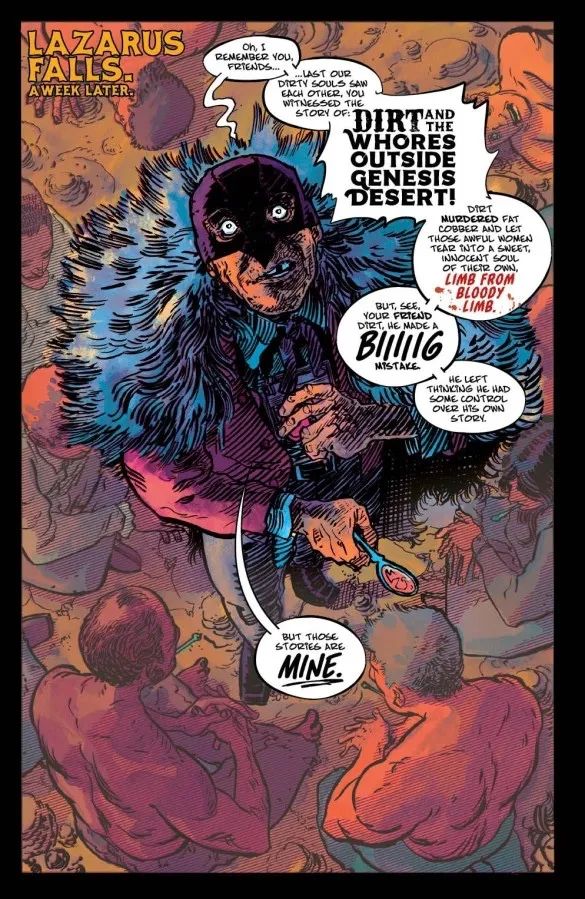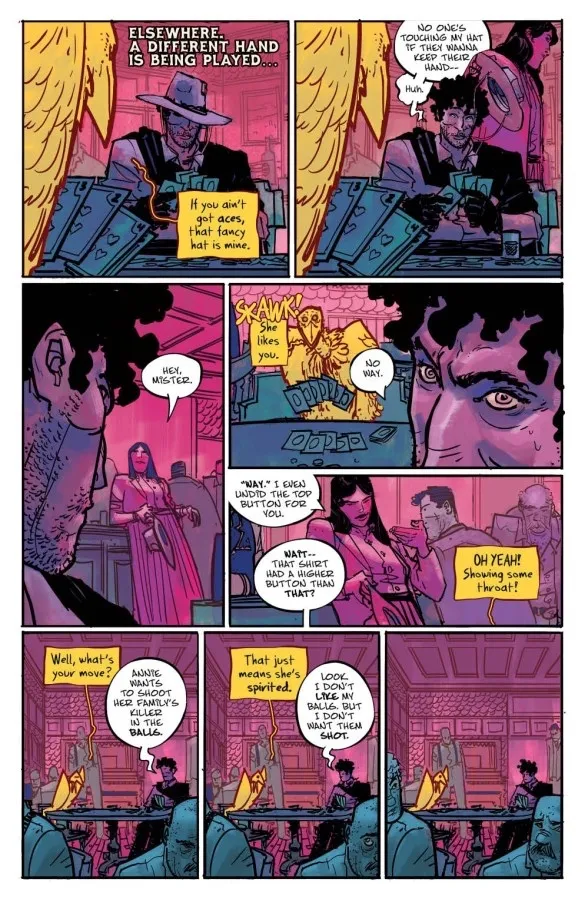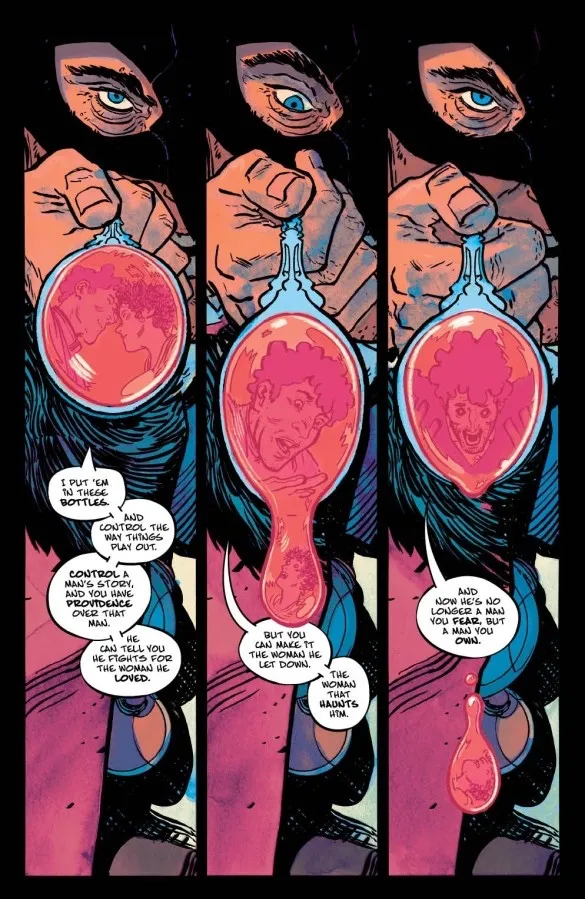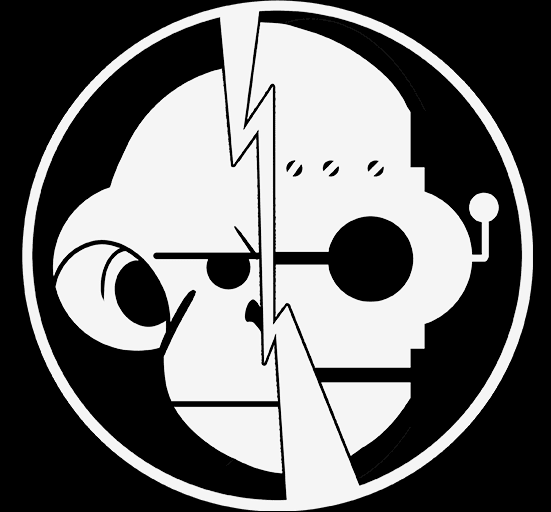The second issue of the modern western comic Above Snakes, published by Image comics, is out now. It draws inspiration from a vast catalogue of genre greats, and is undoubtedly a western, but does not limit itself to that moniker. Following such titles are Undone By Blood and the sci-fi western East of West, Above Snakes uses a genre base as a jumping off point for something greater.
Whenever you think of a Western, your subconscious is automatically flooded with a series of tropes that color your impression of the Western that you are about to enjoy. If the creators have done a good job, then they will present these tropes to you in a satisfying and, hopefully, new way so that the product is not stifled and dull. If they have done their job really well, then they will ignore or even subvert these tropes and present a Western that blows your mind. Stephen King did it with his fantasy/western The Gunslinger, as did the Cohen Brothers with their remake of True Grit; see also T.Vs 1883, and DeConnick/Rios/Bellaire’s Pretty Deadly for Image Comics.
Above Snakes definitely falls into the latter grouping. It re-presents the characteristics of the genre while integrating themes that feel more relevant to today’s society. The overwhelming need for vengeance is the backbone of many western tales, but the post-modern storytelling and small supernatural element gives Above Snakes extra dimension. Great character work is woven through atmospheric artwork and the script is humorous and tragic in equal measures.

Stories within tales…
The second issue of Above Snakes sees the central character, Dirt, play at having a normal life. At least for a very short period of time. And the concept of “play” is important here, because what writer Sean Lewis is giving the reader in his script is an over-the-top performance piece, bordering on a sitcom at times. Several of the sequences are played for laughs and the banter between Dirt, Speck, and Annie forge their characters early in the comic. This then makes the second half of the comic more impactful because those that make us laugh get into our hearts and we are forced to feel their tragedies with them.
This issue’s themes are centralised around fate and not being in control of your own story. The opening of the comic frames this idea succinctly, however the first half of the comic continues to toy with this idea in one way or another. Lewis and artist Hayden Sherman create an air of performance in a bar sequence that could almost have the caption “filmed in front of a live audience” over it. The characters act for the readers in exaggerated ways and there is a sense they are projecting directly out of the comic, like a stage performer acting for the audience. This is quite unusual in comics, which more often than not are trying to draw the reader into the world, but Lewis and Sherman handle the outward performance perfectly.

Letter me this.
There is a reason that people get excited seeing Hassan Otsmane-Elhaou’s name on a comic cover and a quick flick through the pages of Above Snakes will demonstrate why. The lettering leaps from the page and, on occasions, smacks you in the face. Otsmane-Elhaou’s work is sublime, and there is so much going on just with his letters alone that you almost forget Sherman’s artwork is behind it. In most comics, this would be seen as a bad thing, lettering is supposed to be an invisible art form after all, but on these pages so much of the story and the characteristics are brought alive by the lettering. It acts as an equal partner to the rest of the artwork. In fact, it is obvious that Sherman leaves space for the elaborate letters and, in return, Otsmane-Elhaou integrates the word balloons into the artwork. On the second page for example, liquid drips from a spoon and falls over the speech in a beautifully integrated way.
These are the elements that make reading comics worthwhile. They give you something that you can’t get anywhere else. If you want a narrative where a desperate man hunts the killers of his wife/child/dog then film and television is full of them. But, you will only get the Above Snakes version of that narrative in the comic format because the creators are using the narrative as an excuse to play with the medium.

Conclusion
If you love westerns then, yes, you should be reading Above Snakes. However, if you love the comics format, then you should definitely not miss this wonderful example. Sherman’s coloring is unrealistic and garish in a way that only works in comics. Saturated panels and blocks of color for certain characters give each page an emotional atmosphere that precedes reading. This allows the creators to control the reader on every page turn thus creating an emotional flow that dictates expectations.
In the same way that lights are used to create mood on a stage, Sherman uses color as a signifier for emotional context. Even the lettering takes this on board to separate aspects of the storytelling. The slightly supernatural element of Speck, for example, is reflected by speech balloons that stand out against all of the speech balloons surrounding them.
Lewis’ narrative is gripping and packed with character. The comedy is timed perfectly and the drama hits home every time. There are some heartbreaking scenes, which is an impressive feat for characters that you have just been introduced to. This narrative is then presented in the best possible way by two exceptionally talented artists, Sherman and Otsmane-Elhaou.
I very rarely use the term “must buy” but in this case, I think it would be a crime not to use it.

